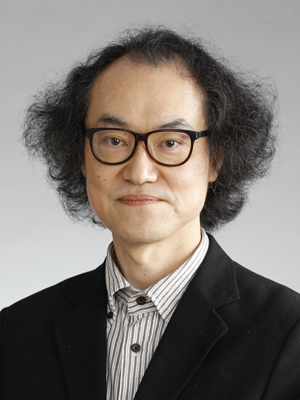Hiroshi Akatsuka
Nuclear Energy Division
- Position
- Associate Professor
- TEL
- +81-3-5734-3379
- hakatsukzc.iir.titech.ac.jp
- Researcher Link
- Web of Science | ORCID

Feature of Research
We are carrying out fundamental studies of plasmas discharge pumped lasers, and applications of synchrotron radiation, on scientific backgrounds of atomic, molecular, optical, and quantum mechanical physics, from microscopic point of view. In addition, we are studying chemistry of molten salt and its applications for material engineering, also from the viewpoint of fundamental chemistry and atomic and molecular physics.
Our concrete research topics are the followings; fundamentals of discharge pumped lasers, diagnostics of cold plasmas for lasers, plasma diagnostics by spectroscopic methods, atomic and molecular processes in plasmas, interactions between hydrogen and metals (chemistry of metals which occlude hydrogen, and material engineering and chemistry for nuclear fusion reactors), interactions between various materials and synchrotron radiation, numerical simulation from microscopic point of view (Monte Carlo and molecular dynamics).
Outline of Research
- Innovative discharge pumped lasers and plasmas for lasers
We are studying a discharge pumped oxygen iodine laser, where we generate a microwave discharge oxygen plasma and pump iodine atoms by resonance energy transfer process from an excited state of a molecular oxygen. We are also carrying out fundamental researches on plasma jet lasers by an arc discharge, and on nuclear pumped lasers. - Diagnostics of plasmas by means of laser and passive spectroscopic measurement
We are developing new methods of plasma diagnostics by passive and laser spectroscopic measurement for any plasmas, for example, thermonuclear fusion plasmas, plasmas for semiconductor industries, and so on. We are trying to measure temperatures and densities of any species in plasmas, by applying spectroscopic measurement of line intensities, laser scattering or absorption, together with modeling of atomic processes in the plasmas. We are carrying out experimental and theoretical studies for cold hydrogen helium plasmas which simulate a boundary area of nuclear fusion reactor, and for plasmas for semiconductor industries, atmospheric nitrogen and oxygen plasmas, etc. - Atomic and molecular processes in plasmas, and isotope separation in plasmas
We are experimentally carrying out spectroscopic studies on the variation in the densities of excited states by electron impact or radiation emission in the plasmas, specified in the previous research topic. In addition, we are theoretically studying the isotope separation phenomena and pressure distribution in a DC discharge tube, by numerical analysis through Monte Carlo simulation of neutral particles in discharge plasmas. We are studying these kinds of discharge engineering from the fundamental physical viewpoint of atomic and molecular collisions. - Lasers, plasmas and isotopes in nuclear fission engineering systems
If we can separate materials from nuclear spent fuel according to the existence of radioactiveness, there is a possibility for us to construct nuclear fission energy systems with no radioactive wastes. For this purpose, we need to develop innovative methods of isotope separation which is feasible to radioactive materials. We are carrying out fundamental studies on physical methods of isotope separation by applying lasers and plasmas. - Interactions between a cold hydrogen plasma and solid materials
It is found that considerable amount of hydrogen are in a state of atomic excited states when they are reflected or re-emitted from metal surfaces which are exposed to hydrogen plasmas. This is a quite interesting phenomenon as a fundamental physics of materials for nuclear fusion reactors. This topic is suitable for those who are willing to study wide range of engineering, such as material engineering and chemistry for nuclear fusion reactors. - Structural analyses on amorphous materials proved by using X-ray and neutron sources
We have performed X-ray diffraction, EXAFS, neutron diffraction as well as molecular dynamics simulation in order to elucidate the structure of amorphous materials, e.g., liquids and glass. These measurements mainly are done at High Energy Accelerator Organization, Tsukuba, or Super Photon Ring (SPring-8), Nishi-harima. - Development of electrochemical processes for zero-emission society
In order to use hydrogen in safe as carbon free energy source, hydrogen absorbing alloy is a promising material as one of options for hydrogen storage system. We have launched the project of basic engineering study of pyrochemical reprocessing for hydrogen absorbing alloys.
Keyword
fundamentals and applications of lasers and plasmas, atomic and molecular physics, quantum theory, diagnostics of plasmas, spectroscopy, optical experiments, plasmas for lasers, gas discharge engineering, Monte Carlo simulation, EXAFS, X-ray diffraction, Neutron diffraction, Molecular dynamics simulation, amorphous, ionic melt, hydrogen absorbing alloy, electrochemistry

